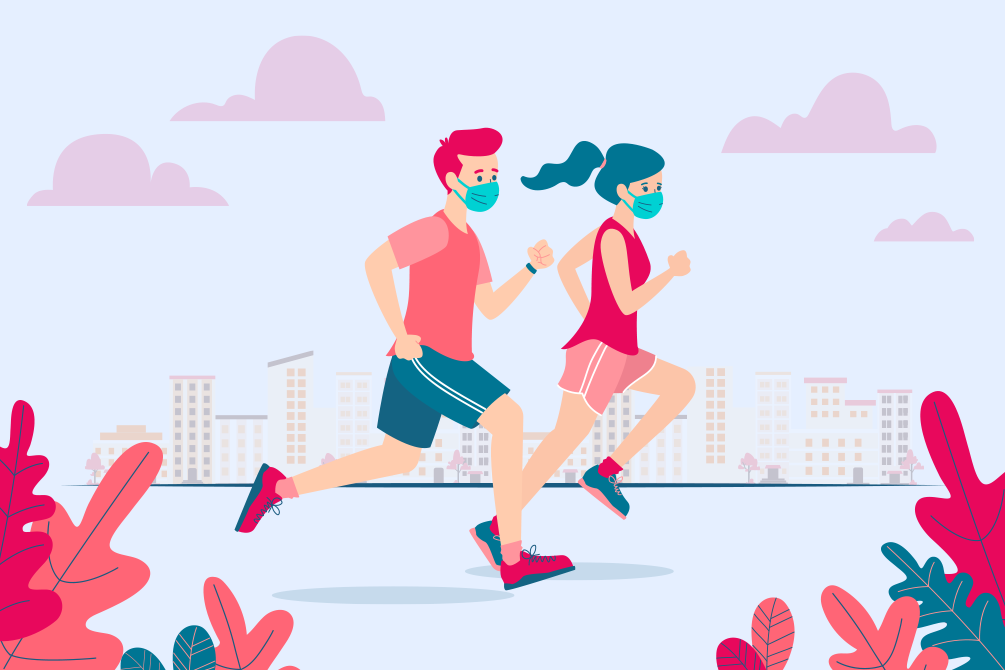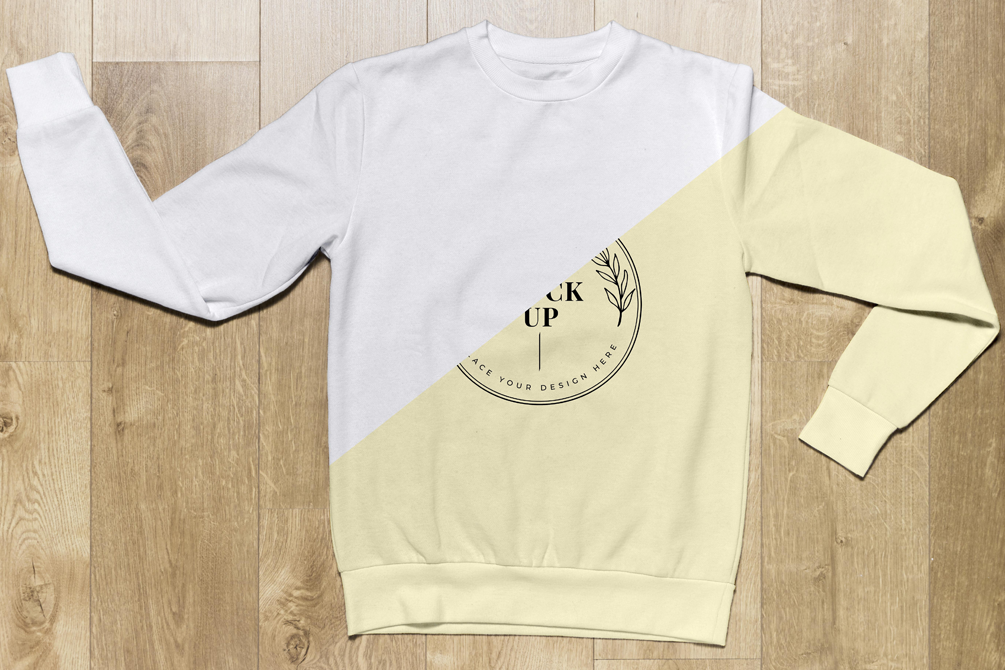Yoga pants, criss cross tank tops, cycling t-shirts.
These are no longer just ‘gym wear’. The athleisure fashion trend is now on the streets. This shift in activewear has encouraged retailers to maximize opportunities from this growing trend. And there’s no wonder why the athleisure wear achieved a global revenue of $414 billion last year.
Do you look at people wearing these, and say – ‘how do I sell what they are wearing? Then this blog is for you.
We share insights on how you can start selling sportswear online and even give you tips to survive in the market.
Continue reading!
Step 1: Find a Product
First things first. Find a product idea. Ideation could be time-consuming but it’s worth it.
What clothing items do you want to sell? The most common athleisure outfits are leggings, joggers, sweatpants, gym tanks, sports bras, hoodies, shorts, sneakers and many more.
Begin by doing a market analysis and competitor research to know what’s the demand. Add your creativity and interest to the result you get, and finalize a product.
Niche: Let’s say you decided to sell yoga pants. There are hundreds of brands selling yoga pants. This means there’s huge competition in the market. So, what you do is: focus on a specific segment, for example, larger sized yoga pants. This will help you reach your ideal customers and make your entry into the market relatively easy.
Fabric: At this stage, we suggest you be realistic. You dream to be the next Nike and that’s great. But as a newbie, it’s good to keep a reality check. Big guns like Nike have the resources and dedicated teams working on fabrics which are not available elsewhere. You do not have that right now. So, best is to find manufacturers who supply quality products.
Trends: When starting your activewear business, consider the recent changes in the industry:
-> Customers are becoming increasingly environment-conscious and that has led to sustainable clothing trends. You can cater to this demand by choosing products made with organic cotton, recycled polyester and low-impact non-toxic dyes.
-> 90s products are making a return in the industry. Lightweight and breathable crop tops are in style. Additionally, oversized and asymmetrical style has regained popularity.

(Source: https://uk.ryderwear.com/)
Step 2: Design Your Product
When it comes to design, most activewear brands are adopting the ‘less is more’ approach. They are creating beautiful minimalist pieces with sleek lines and unadorned fabrics. For instance, Alo Yoga is known for its minimalist pieces that carry a touch of streetwear edge.

Next comes colors. Keep in mind your future customers and choose colors strategically. While you may think it’s a comfortable idea to stick to basic colors like white or grey, the trends say otherwise. People love fresh and bright pastel colors such as lilac, aqua, and peach.
These tips will help you choose the right color:
Go monochromatic – meaning, choose various shades, tones, or tints of one colour.

Analogous colours – these are groups of three colors that are next to each other on the color wheel. Analogous hues will help create a rich, monochromatic look.

Experiment – be bold and keep experimenting with different colors.
Step 3: Employ the Power of Personalization
There was a time when customers were delighted with mass production – uniform products at a lower price. That’s not the case anymore. There’s a shift in shopping choice and customers are willing to pay more to a brand that offers personalization.
Think this way: there’s customer A who wants a cycling t-shirt with ‘fitness freak’ written, while customer B wants yoga pants with pizza images. How will you satisfy their demands? Here’s when a product design tool comes to picture. A tool which will let customers create designs they like.
This is a powerful tool. It strives to provide a singular shopping experience to users by giving them complete freedom to design their product. The best example is Nike By You where you can create your own iconic sneakers.
Why don’t you try and see for yourself!
Personalization will help enhance customer loyalty. When customers have two options – one brand that gives an ordinary sweatpant and the other lets them make the pant extraordinary by letting them create their own designs; naturally, they are likely to purchase from the second brand and purchase more often. This way, you can even increase customer retention. Secondly, this is a great way to increase brand awareness. Your potential customers are likely to share their experience on social media platforms. This word-of-mouth publicity is only going to benefit you further.
Step 4: Choose a Way to Sell
Option 1 – Sell on an art/retail marketplace
If you do not have an online store and neither the budget to create one, then a good idea is to sell on marketplaces like Threadless. These sites, also known as print-on-demand sites let you upload products and sell them to potential customers.
Here’s how such platforms work:
-> Create 100s of print-on-demand activewear items
-> Make your shop unique with a fully customizable storefront
-> Set your own prices with the help of a pricing tool or let the marketplace do it for you.
-> Let them handle the inventory, manufacturing, shipping, and customer care
-> Get access to customer contact info for email opportunities
This way you can sell your items to anyone in the world. While you will enjoy the web traffic from these marketplaces, you need to keep promoting your store as well.
You can even sell your activewear products on popular retail marketplaces like Amazon, Etsy, and eBay. As compared to art marketplaces, these could be little costly as they charge (1) a listing fee per item you post; (2) a monthly subscription or service fee; (3) a fee for each transaction; or (4) some combination of these. But in return you receive massive exposure in terms of traffic.
Option 2 – Sell on social media platforms
Is social media selling right for your business? Recent studies have found that businesses that practice social selling generally see a $5 return for every $1 invested. That’s possible only if you sell on the right platform and sell it correctly.
Before you choose a platform, take audience demographics into account. In your case, your target audience will comprise mainly millennials as they consist of a big chunk of the activewear market. So, Instagram and Facebook should be your top choice and not LinkedIn and Twitter.

(Source: LyfMarketing)
Facebook social selling – Make use of the product catalogue feature. This feature allows you to link your inventory to your Facebook business profile. Click good images, write good product descriptions, set the price, and you are set to begin selling. With Facebook ads, you can reach customers in a highly targeted way.
Instagram social selling – Instagram provides shoppable posts. When a user taps one of these posts, they will then see the name of the item and the price. When they tap it again, they’ll get more information. If they like what they see, they can make a purchase right there in the Instagram app. When selling on Instagram remember that this is a visual platform. Make sure your image quality is top-notch to entice customers.
Social Selling Don’ts
Don’t ever ignore comments. People will ask you questions about your product which you should answer as timely as possible. The more you engage the more they are likely to make a purchase.
Don’t constantly try to sell. Maintain a balance between sharing product posts and informative posts. A unique and valuable post will increase brand awareness and more audiences will reach out to explore what you are offering.
Option 3 – Create an online store
Having an online store will give you a competitive edge and a widened scope to expand customer base and potential revenue.
Selling products online is not a cakewalk but technology has made things easier. Even if it’s easy, it is expensive – that’s what you are thinking. Well, you of course need to make some investment. But when compared to profits you get, it’s nothing. If you think building an eCommerce platform is a feasible choice at this point, then go for it!
There are two ways through which you can build your ecommerce website.
-> Hosted ecommerce website
-> Self-hosted ecommerce website
If you are someone with little or no technical expertise, a hosted site is suitable. And if you are looking to create a custom store, go for a self hosted website. However, the option will demand some technical skills.
If you think building an eCommerce site all by yourself could be time-consuming and you might not be able to focus on your products, then hire a development company that has a team of designers and developers. With their experience and expertise, you can have a store the way you want.
Step 5: Strategize Shipping
Shipping products yourself means you need to take care of product quantity, weight, packaging process and so on. If you think you do not have time for that, dropshipping will work for you. Dropshipping model is where, instead of storing products, you purchase products from third-party suppliers who will ship directly to the customer.
This is how dropshipping works:
-> Your customer places an order for a product.
-> You forward the order to the dropship supplier.
-> The dropship supplier packages and ships the order directly to the customer with your brand’s name on the package.
Get Your First Sale
Giveaways: Seattle-based online store Girlfriend Collective, directed their entire marketing budget for the launch into giving away their gear for free. All customers had to do was to share on Facebook or through email, and pay for the shipping costs (which came to about $20). The retail price of each pair was $68-78. The result was; the brand received 10,000 orders on their first day, and their website crashed within the first 2 days from heavy traffic.
Product giveaway is an effective promotional strategy that helps you increase brand awareness and potential sales. However, to reap its benefits, you need to have a solid strategy. Keep these things in mind when creating a giveaway promotion plan.
-> Choose a prize that suits your target audience.
-> Determine how long to run the contest
-> Decide the platforms you’ll use to promote your contest
Influencer marketing: Customers trust reviews that come from third parties. Utilizing this approach can drive brand awareness, and cultivate a potential audience. There are different ways to benefit from influencer marketing – (a) you can ask influencers to share your product on their social media handles, (b) if you have an online store, you can publish blogs written by influencers. There are users who buy thousands of followers. These are fake influencers. To avoid them, it’s necessary you know how to qualify potential influencers. Hootsuite shared something called, “The R’s of influence.”
-> Relevance: Is the influencer sharing content relevant to your business?
-> Reach: Reach refers to the number of followers an influencer has on their social sites.
-> Resonance: Is the potential level of engagement the influencer can create with an audience both valuable and relevant to your brand?
It’s not necessary that you need influencers on the level of Kim Kardashian. You can target fitness trainers, yoga instructors with let’s say 500,000 followers provided the posts get you a good amount of orders.
Product reviews: Wondering how will you get a review when you are just launching the business? Give a group of people your product to test out and ask them to write a review on either your store or social media. Once you start getting orders, encourage customers to leave a review.
Survival Strategies
Activewear is a competitive market. How to make sure you survive here? Remember – change is the law of life. You need to keep evolving.
Once you think your brand is well set up and you are earning a decent amount, try experimenting with products. How long will people like those same blue-grey sweatpants? If you started with selling cotton sweatpants, you can add 3-4 different fabrics like polyester or shift to organic materials.
Consider expanding your product line. Do not limit yourself to one product. Keep expanding your store by adding different types of activewear. Lastly, target different segments of the market. Let’s say you began by selling cycling t-shirts for women. Why not include kids too now that your business is growing.
What Are You Waiting For?
The activewear trend is here to stay. There was a time when buying activewear was just for athletes. Today, we find people going for shopping or brunch in sneakers, and yoga pants. And with home-quarantine becoming normal, the demand for comfortable wear is rising.
All product and company names are trademarks™, registered® or copyright© trademarks of their respective holders. Use of them does not imply any affiliation with or endorsement by them.








Follow with us